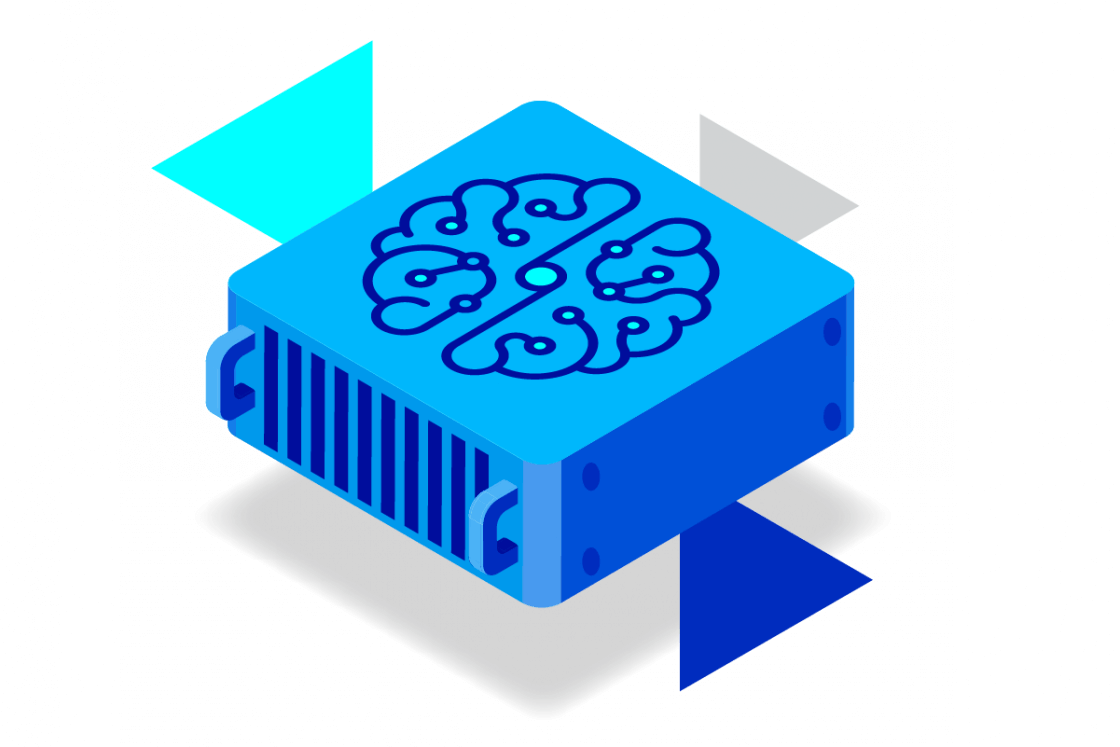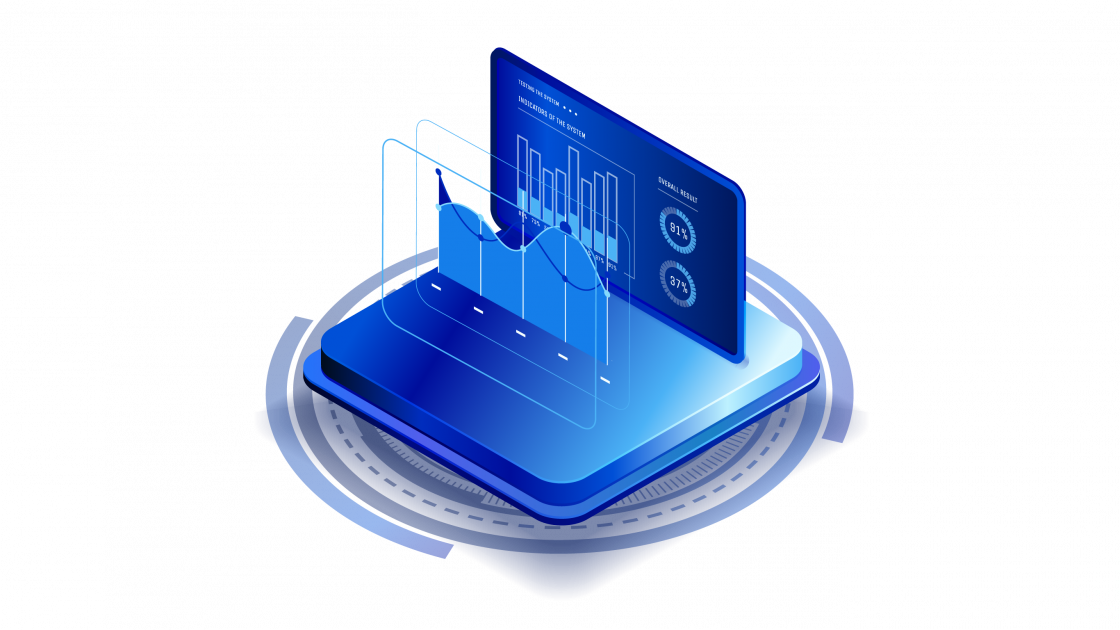What is MLOps
MLOps, short for Machine Learning Operations, is a set of practices that automates the process of building, deploying, and maintaining machine learning models. It essentially applies the DevOps principles of collaboration and automation to the machine learning lifecycle, including training, testing, deploying, and monitoring models.

MLOps aims to ensure that machine learning models are reliable, efficient, and deliver real-world value. It helps organisations smoothly implement machine learning models into production and keep them running effectively.
What is Machine Learning?
Machine learning is a field of artificial intelligence that enables computers to learn and improve from experience without being explicitly programmed. It involves developing algorithms and statistical models that allow systems to perform specific tasks effectively by analysing data, identifying patterns, and making predictions or decisions.
The key idea behind machine learning as part of AI solutions is to create programs that can access data, learn from it, and then use that learning to make informed decisions or predictions without relying on rule-based programming.
Machine learning encompasses a variety of approaches, each with its strengths and applications. Here are a few common types:
Supervised learning:
In this approach, the data used for training is labelled. Imagine showing a machine learning algorithm thousands of pictures of cats and dogs, with each picture clearly labelled. This allows the algorithm to learn the characteristics distinguishing cats from dogs and then apply that knowledge to identify new, unseen images.
Unsupervised learning:
Here, the data is unlabelled. The machine learning algorithm must independently find patterns and relationships within the data. This can be useful for tasks like anomaly detection or data clustering.
Reinforcement learning:
This method involves training an algorithm through a trial-and-error process. The algorithm interacts with a simulated environment and receives rewards for desired behaviours, allowing it to learn optimal strategies over time.
Machine learning in the context of AI
Artificial Intelligence, at its core, is the science of creating machines capable of performing tasks that typically require human intelligence. These tasks range from problem-solving and decision-making to speech recognition and language translation. AI encompasses many techniques and methodologies, among which Machine Learning has emerged as a particularly potent and versatile tool. The foundational idea behind ML is that systems can learn from data, identify patterns, and make decisions with minimal human intervention.
Machine Learning accelerates AI evolution by offering a more dynamic approach to data analysis. This capability allows AI systems to adapt to new circumstances and improve over time, which is crucial for applications requiring frequent updates or dealing with complex, variable datasets.
Through their learning algorithms, ML models can process large volumes of data at a speed and scale unattainable to human analysts. This efficiency is why ML has become the backbone of many contemporary AI systems, powering advancements in fields as diverse as healthcare, finance, autonomous vehicles, and smart cities.
ML is a significant focus area in AI and is part of a broader ecosystem of AI technologies, including deep learning, natural language processing (NLP), and robotics. Deep learning, a subset of ML, powers complex tasks such as image and speech recognition through neural networks that mimic human brain functions.
NLP, which enables machines to understand and interpret human language, often leverages ML to improve algorithms. In robotics, ML algorithms help robots learn from their environment and experiences, enhancing their autonomy. This interdependence illustrates how ML not only benefits from but also contributes to the advancement of other AI domains.

How does MLOps work?
The MLOps lifecycle consists of four primary cycles. Each cycle sets the stage for the execution of successful machine-learning operations. The four cycles or stages are:
Data cycle:
This involves gathering and preparing data for ML model training. Raw data is collected from various sources, and techniques like feature engineering transform and organise it into labelled data ready for model training.
Model cycle:
In this cycle, the ML model is trained using the prepared data. It is crucial to track the different versions of the model as it progresses through the lifecycle, which can be done using tools like MLflow.
Development cycle:
The trained model is further developed, tested, and validated to ensure it is ready for deployment to a production environment. Automated continuous integration/continuous delivery (CI/CD) pipelines can reduce manual tasks.
Operations cycle:
This monitoring process ensures the production model continues to perform well and is retrained as needed to improve over time. MLOps can automatically retrain the model on a schedule or when performance metrics fall below a threshold.
Core principles behind MLOps
MLOps is built on a foundation of core principles that ensure machine learning models' reliability, efficiency, and scalability in the real world. Here's a breakdown of some fundamental principles:
Automation:
A core tenet of MLOps is automating repetitive tasks throughout the machine learning lifecycle. This includes data pipeline management, model training, testing, deployment, and monitoring. Automation minimises human error and frees data scientists to focus on higher-level tasks like model development and improvement.
Version control and reproducibility:
MLOps emphasises tracking every change made to data, code, and models. This allows for easy rollbacks to previous versions if necessary and ensures experiments are reproducible. Everyone on the team can understand the model's lineage and how it was developed.
Continuous integration & delivery (CI/CD):
Modern MLOps integrates with development tools used by data scientists. When changes are made, automated testing ensures everything functions as expected. This catches bugs early in the development cycle and prevents issues from delaying deployment.
Collaboration:
MLOps fosters collaboration between data science, engineering, and operations teams. By streamlining workflows and providing shared visibility into the model's lifecycle, MLOps breaks down silos and ensures everyone is working towards the same goal.
Monitoring & feedback loops:
The MLOps process continuously monitors the performance of deployed models. It tracks metrics like accuracy, fairness, and potential biases. If something goes wrong, alerts are triggered, prompting an investigation and allowing for corrective actions. This feedback loop is crucial for maintaining model performance and adapting to real-world changes.
Governance & regulatory compliance:
It’s also essential that MLOps enforces policies and procedures around model development and deployment. This ensures compliance with fairness, explainability, and data privacy regulations. MLOps tools can track the origin of data used to train models and document the decision-making process for audits.
Scalability & efficiency:
MLOps practices ensure that the entire machine learning pipeline can handle growing data volumes and increasing model complexity. This involves using cloud-based infrastructure and containerisation technologies for efficient resource utilisation and model deployment across various environments.
What are the benefits of MLOps?
MLOps offers a range of benefits that streamline the machine learning lifecycle and unlock the true potential of your models. Automating repetitive tasks like data preparation, training, and deployment frees up data scientists for more strategic work. CI/CD practices accelerate development by catching errors early and ensuring smooth implementations. This translates to faster time-to-value for your machine-learning projects.
It also fosters collaboration between data science, engineering, and operations teams. Shared tools and processes give everyone visibility into the model's lifecycle, leading to better communication and streamlined workflows.
MLOps practices like containerisation and cloud-based infrastructure enable you to handle growing data volumes and increasing model complexity. This allows you to scale your machine-learning efforts effectively as your needs evolve.
Teams that use MLOps instead of another route to machine learning success also enjoy that MLOps enforces policies and procedures around model development and deployment. This ensures your models comply with fairness, explainability, and data privacy regulations. MLOps tools can track data lineage and document decision-making processes for audits.
Altogether, between automating tasks and optimising resource utilisation with MLOps practices, teams that use MLOps see it lead to significant cost savings. Additionally, by catching errors early and deploying high-quality models, you can avoid costly rework and performance issues down the line.
Finally, MLOps facilitates a feedback loop where deployed models are continuously monitored. This allows you to identify performance degradation, data drift, or potential biases. Addressing these issues proactively ensures your models stay relevant and deliver optimal results over time.

How To Implement MLOps
Organisations should start by setting up the necessary infrastructure to implement MLOps. This includes using a version control system to manage code, data, and model artefacts, implementing a CI/CD pipeline to automate the building, testing, and deployment of models, deploying a model registry to store and version-trained models, and setting up monitoring and alerting to track model performance in production.

Next, organisations should define their MLOps workflows. This involves establishing an iterative-incremental process for designing, developing, and operating ML applications, automating the end-to-end ML pipeline (including data preparation, model training, evaluation, and deployment), and implementing continuous retraining and model update processes based on production monitoring.
Finally, organisations should adopt MLOps best practices, such as using containerisation to ensure consistent development and deployment environments, implementing rigorous testing at each stage of the ML pipeline, maintaining a feature store to manage and version input data features, leveraging MLOps platforms or tools to simplify implementation, and fostering collaboration between data scientists, ML engineers, and DevOps teams.
What are the challenges around MLOps?
Implementing MLOps, while incredibly beneficial, comes with unique challenges. Data-related issues constitute a significant hurdle. Ensuring data quality throughout the pipeline is paramount, as poor data leads to poorly performing and potentially harmful models. Additionally, managing data versioning for model reproducibility and governance processes to handle security, privacy, and ethical concerns are all complex parts of the MLOps puzzle.
The lack of skilled personnel also creates roadblocks. MLOps demands cross-functional experts in data science, software engineering, and DevOps principles—finding these individuals can be pretty tricky. Beyond that, MLOp's success indeed hinges on fostering collaboration between historically siloed teams.
Breaking down barriers between data scientists, developers, and operations personnel while aligning on goals and processes requires a conscious cultural shift within organisations.
Monitoring models after deployment is another area frequently neglected. The real world is dynamic, and a model's performance will degrade over time due to concept drift.
Proactive monitoring systems and mechanisms are needed to collect user feedback to ensure models are continuously improved and aligned with their business needs. Lastly, experimentation and reproducibility can become complex. Tracking the multitude of experiments, variations in data, and associated outcomes is essential to understanding the model development process and streamlining future updates.
While these challenges shouldn't be underestimated, they can be successfully navigated. Investing in specialised MLOps platforms, providing training opportunities for existing staff, and prioritising clear communication and collaboration across teams help pave the way for a smoother MLOps implementation.
Understanding the difference between MLOps and DevOps
The critical difference between DevOps and MLOps is that MLOps focuses specifically on the unique challenges of deploying and managing machine learning models in production. In contrast, DevOps is a broader set of practices for streamlining the software development lifecycle.
While both DevOps and MLOps aim to bridge the gap between development and operations, MLOps adds additional considerations specific to machine learning. These include managing the data used to train models, validating model performance, and monitoring models for performance degradation over time as the real-world data they are exposed to changes.
In a DevOps pipeline, the focus is on automating software application build, testing, and deployment. In an MLOps pipeline, additional steps for data preparation, model training, and model evaluation must be automated and integrated with the deployment process.
Another key difference is the need for MLOps to incorporate responsible and ethical AI principles. Ensuring machine learning models behave unbiasedly and transparently is a critical concern that is less prominent in traditional software development.
While DevOps and MLOps share many common principles around collaboration, automation, and continuous improvement, MLOps introduces additional complexities around data, models, and model governance that require specialised tools and practices beyond what is typically found in a DevOps environment.

Examples of MLOps
MLOps is used by companies large and small. For example, a leading bank implemented MLOps to streamline its customer onboarding process. The bank used ML models to automate the verification of customer information and detect fraud in real-time. This improved the customer experience as the onboarding process became faster and more efficient. The bank also reduced the risk of fraud, which increased customer trust.
Likewise, a large retail company used MLOps to improve its supply chain management. The company used ML models to predict product demand and optimise the allocation of resources in its warehouses. This resulted in improved demand forecasting accuracy, reduced waste, and increased efficiency in the supply chain.
MLOps help with healthcare, too. A healthcare provider used MLOps to improve patient outcomes. The provider used ML models to analyse patient data and identify patients at risk of adverse events. This information was used to intervene and prevent adverse events, and the provider saw a significant improvement in patient outcomes as a result.
A large logistics company used MLOps with Google Cloud AI Platform to optimise its supply chain processes. The company developed and deployed ML models that could accurately predict demand, optimise routes, and reduce delivery times. This improved the overall efficiency of the supply chain and decreased costs.
These examples demonstrate how organisations across industries have leveraged MLOps to streamline their machine learning workflows, improve operational efficiency, and deliver real business value.
The power of artificial intelligence to empower everyone
Artificial intelligence (AI) is often seen as an aspect of data science reserved only for those who are experienced in the field. At OVHcloud, we believe in the outstanding potential of this practice in all business sectors. And we believe that the complexity of it should not be an obstacle in the use of big data and machine learning. This is why we focus our efforts on delivering tools that can help tackle the challenges faced by businesses, like predictive analysis of data sets, and making tools easier to use for all user profiles.

OVHcloud and MLOps
As well as supplying a wide range of storage solutions, OVHcloud offers best-in-class machine learning solutions plus data analytics services designed to process your datasets with minimal effort, all while helping to create actionable insights for better business management and growth.

Data Processing
When you want to process your business data, you have a certain volume of data in one place, and a query in another, in the form of a few lines of code. With Data Processing, OVHcloud deploys an Apache Spark cluster in just a few minutes to respond to your query.

Data Analytics
A complete portfolio of services to leverage your data.
In addition to our range of storage and machine learning solutions, OVHcloud offers a portfolio of data analytics services to effortlessly analyse your data. From data ingestion to usage, we have built clear solutions that help you control your costs and get started quickly.

Orchestration and Containers
Accelerate your business applications with cloud resource automation tools. A cloud platform not only provides on-demand computing resources connected to the network — it also delivers flexible storage. It also offers tools to operate and automate actions, such as deployments, maintenance or scaling up during peak loads.